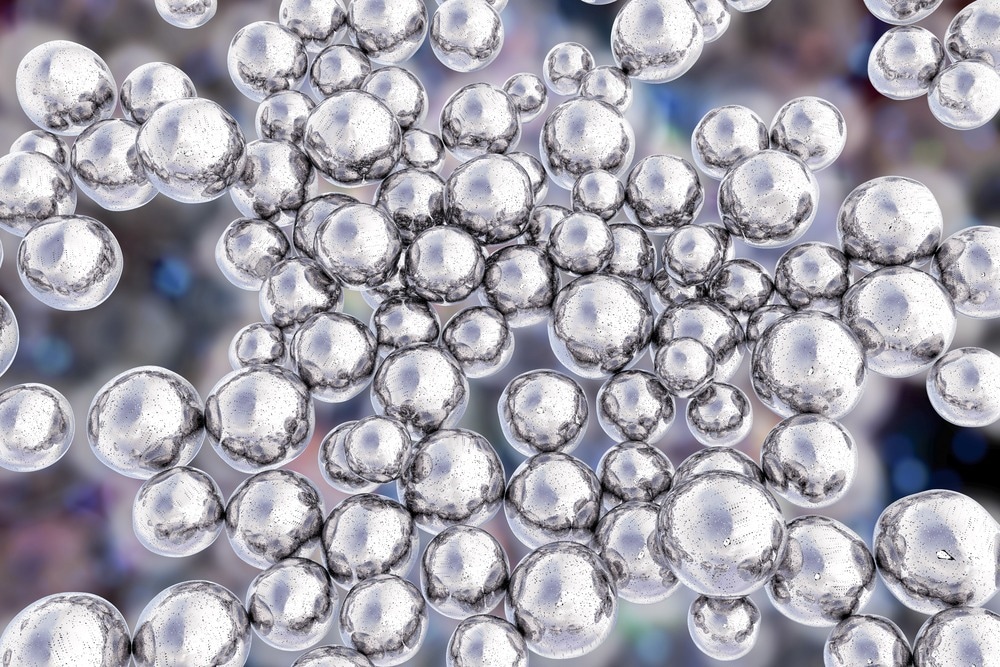In a recent article published in Scientific Reports, researchers presented a comprehensive study on the development and performance evaluation of silver-coated laser-induced graphene (LIG) strain sensors. The research aims to address the limitations of traditional strain sensors by leveraging the unique properties of LIG combined with the conductive benefits of silver nanoparticles. The findings indicate that the silver-coated sensors exhibit superior performance compared to their uncoated counterparts, making them promising candidates for future commercialization in various fields.

Image Credit: Kateryna Kon/Shutterstock.com
Background
Strain sensors are crucial in numerous applications, including structural health monitoring, robotics, and biomedical devices. Traditional sensors often face sensitivity, linearity, and reliability challenges, particularly when measuring small strains.
The advent of laser-induced graphene technology has opened new avenues for creating flexible and highly sensitive sensors. LIG is produced by laser scribing a carbon-based material, such as polyimide, which results in a porous graphene structure with excellent electrical properties. However, to further enhance the performance of these sensors, the integration of conductive materials like silver nanoparticles is explored.
Silver is known for its high electrical conductivity and biocompatibility, making it an ideal candidate for improving the electrodynamic performance of strain sensors. This study investigates the fabrication process, characterization, and performance of silver-coated LIG sensors, providing insights into their potential applications.
The Current Study
The fabrication of the silver-coated LIG sensors involved several key steps. Initially, a polyimide film was prepared as the substrate for LIG synthesis.
The film was subjected to laser treatment using a GCC LaserPro C180 II machine, effectively converting the polyimide into graphene.
The laser parameters, including power, speed, and resolution, were optimized to ensure uniform graphene formation. Following the synthesis of LIG, a sputter coating process was employed to deposit silver nanoparticles onto the graphene surface.
The coating was performed using a Desk Sputter Coater DSR1 vacuum deposition system for 300 seconds, which was determined to achieve complete coverage without altering the structural integrity of the graphene.
The resulting silver-coated LIG sensors were then characterized using various techniques, including Raman spectroscopy, scanning electron microscopy (SEM), and energy-dispersive X-ray spectroscopy (EDS), to confirm the successful integration of silver and the quality of the graphene structure. Electrodynamic tests were conducted to evaluate the performance of both the silver-coated and uncoated sensors across a strain range of 5% to 70%, focusing on their sensitivity, linearity, and hysteresis.
Results and Discussion
The results demonstrated that the silver-coated LIG sensors significantly outperformed the uncoated sensors in terms of sensitivity and reliability. The gauge factor, which quantifies the sensitivity of the sensors, ranged from 17.7 to 26.7 for the silver-coated sensors, indicating their ability to detect even minor changes in strain.
In contrast, the uncoated sensors exhibited lower sensitivity, highlighting the advantages of the silver coating. The study also revealed that the silver nanoparticles enhanced the piezoresistive effect, allowing the sensors to capture subtle fluctuations associated with blood pressure pulses.
Despite their small magnitude, the sensors' dynamic range was effectively maintained, enabling accurate measurements of lower strains. The uniformity of the results from the silver-coated sensors was particularly noteworthy, as it indicated a high level of reliability across multiple tests. The sensors' linear behavior, low hysteresis, and stability further support their potential for practical applications in monitoring physiological signals.
The characterization tests, including Raman spectroscopy, confirmed graphene's successful synthesis and silver nanoparticles' presence on the LIG surface. The G band observed in the Raman spectra indicated the graphene's quality, while the silver distribution was analyzed through SEM and EDS, revealing a homogeneous coating. The interaction between the silver nanoparticles and the LIG matrix enhanced the sensors' overall performance, making them suitable for dynamic applications where precise strain measurements are critical.
Conclusion
In conclusion, the study successfully demonstrates the fabrication and performance evaluation of silver-coated LIG strain sensors, highlighting their enhanced sensitivity and reliability compared to uncoated sensors.
The integration of silver nanoparticles significantly improves the electrodynamic properties of the sensors, making them capable of detecting minute changes in strain, which is essential for applications in biomedical monitoring and other fields.
The research emphasizes the potential of silver-coated LIG sensors for future commercialization, given their remarkable performance characteristics, including high sensitivity, low hysteresis, and excellent stability.
As the demand for advanced sensing technologies continues to grow, this study's findings pave the way for further exploration and development of innovative sensor solutions that can meet the challenges of modern applications. The successful combination of LIG technology and silver coating represents a significant advancement in strain sensing, with promising implications for various industries.
Source:
Abedheydari F., Sadeghzadeh S., et al. (2024). Silver-decorated laser-induced graphene for a linear, sensitive, and almost hysteresis-free piezoresistive strain sensor. Scientific Reports 14, 28715. DOI: 10.1038/s41598-024-80158-y, https://www.nature.com/articles/s41598-024-80158-y